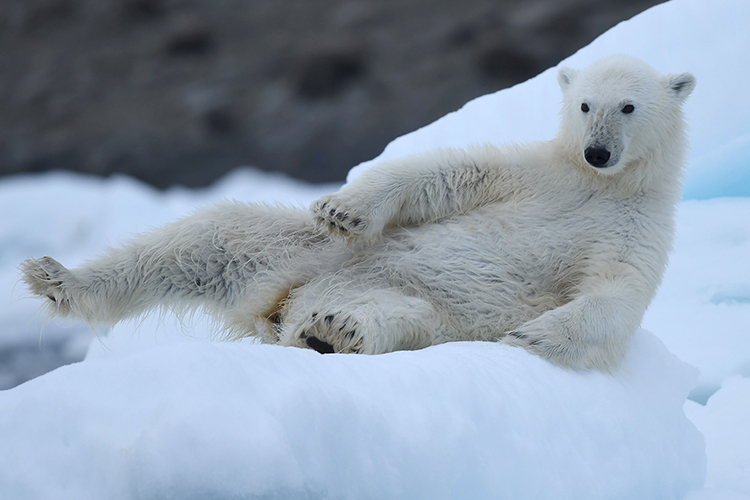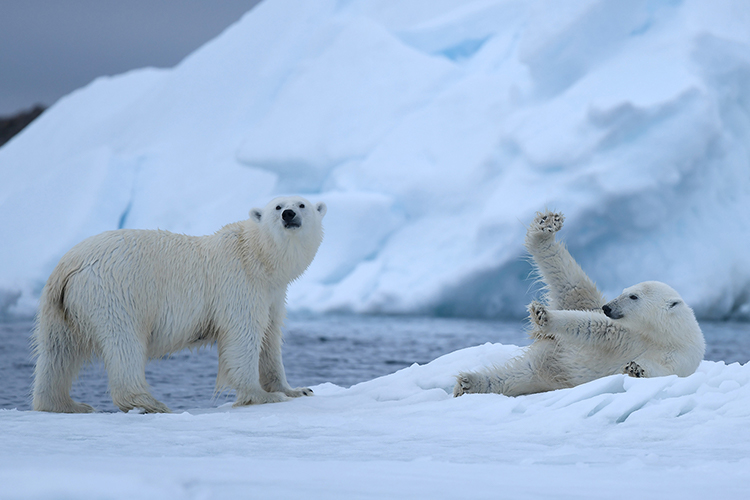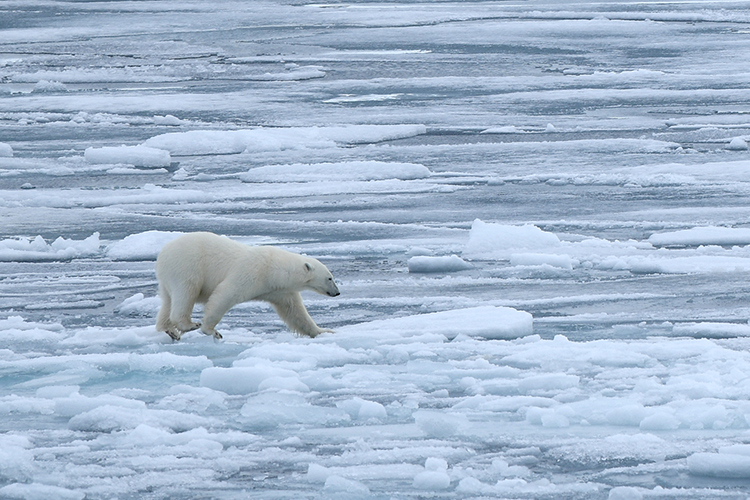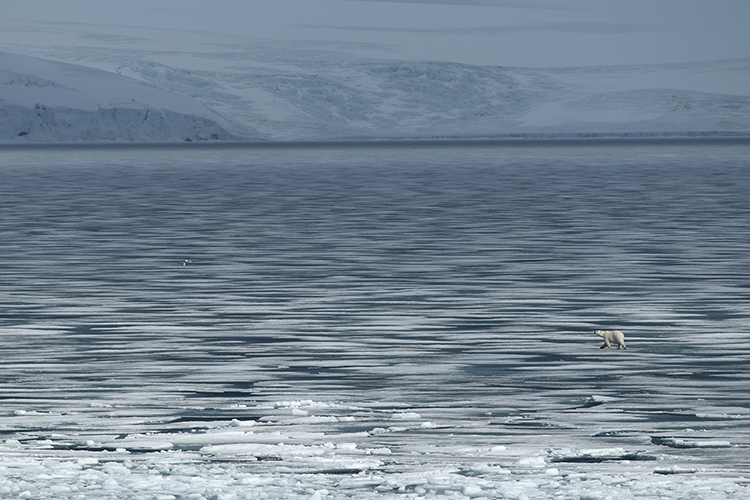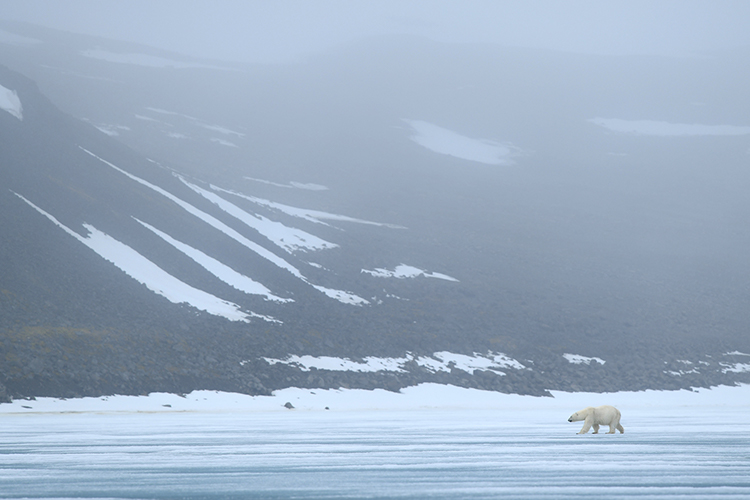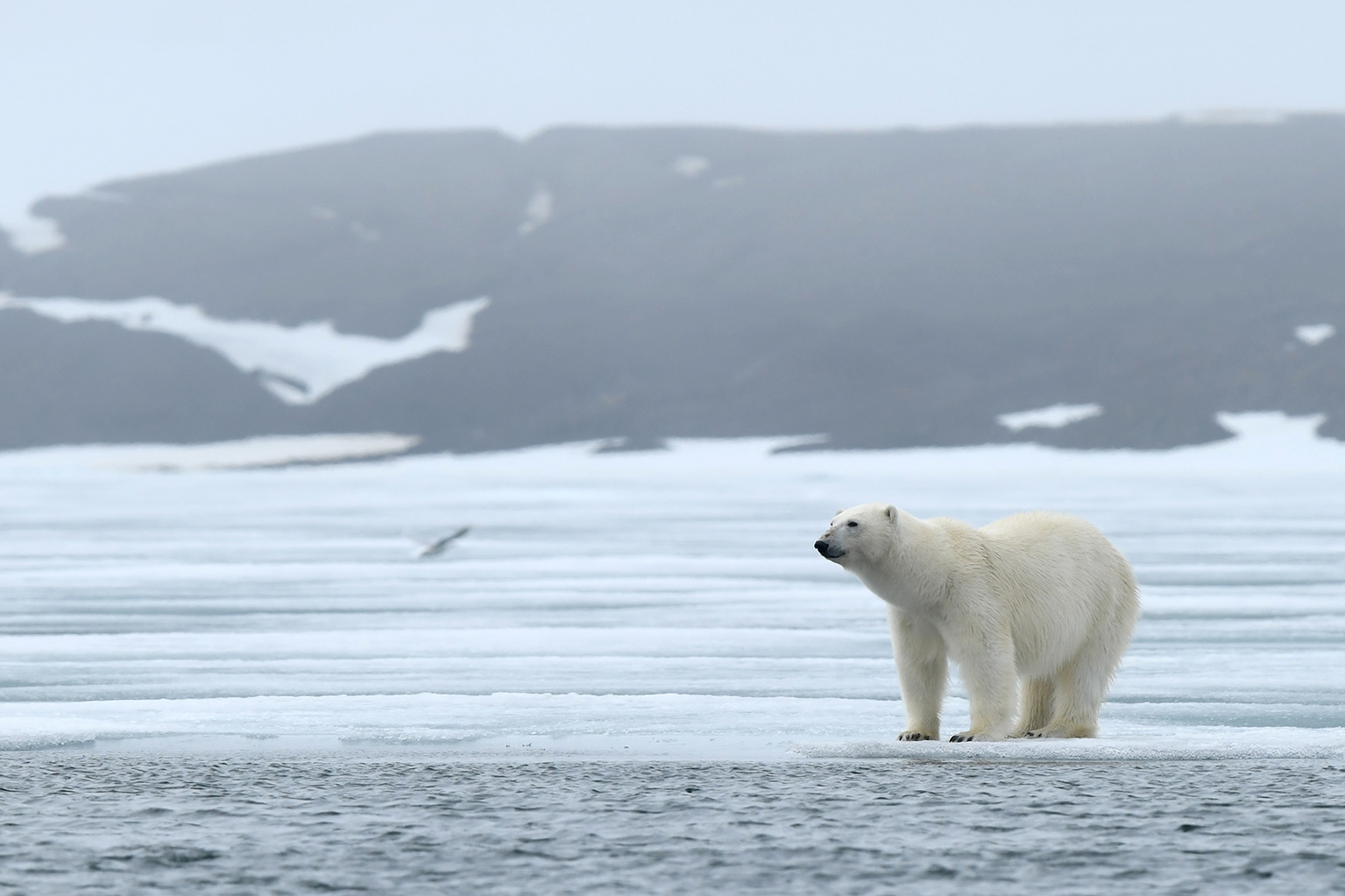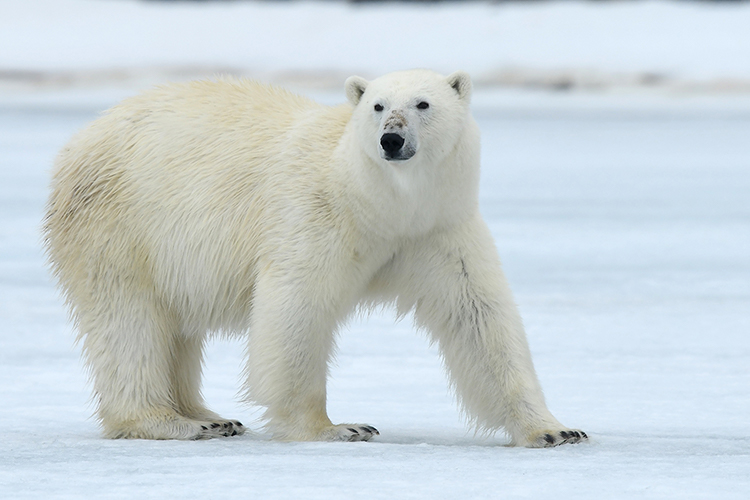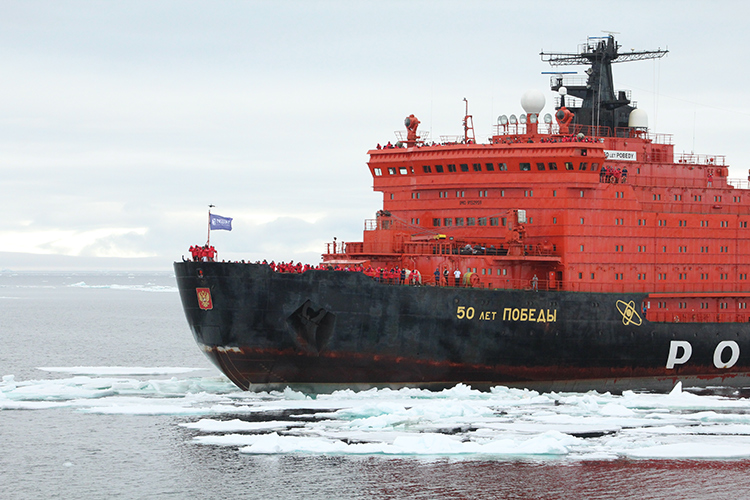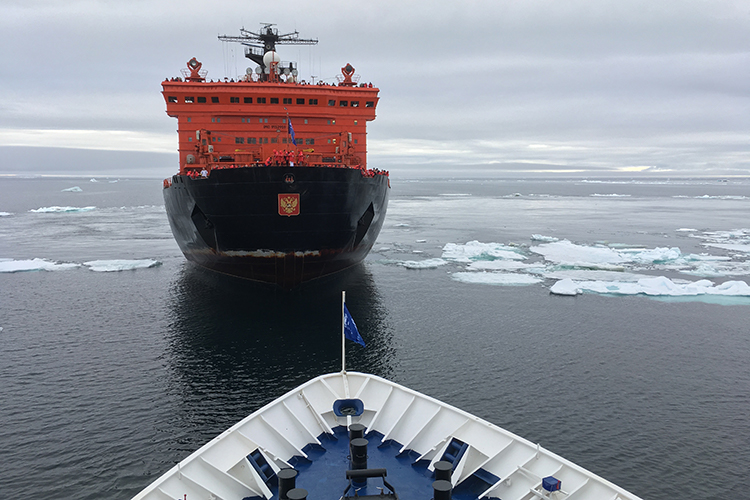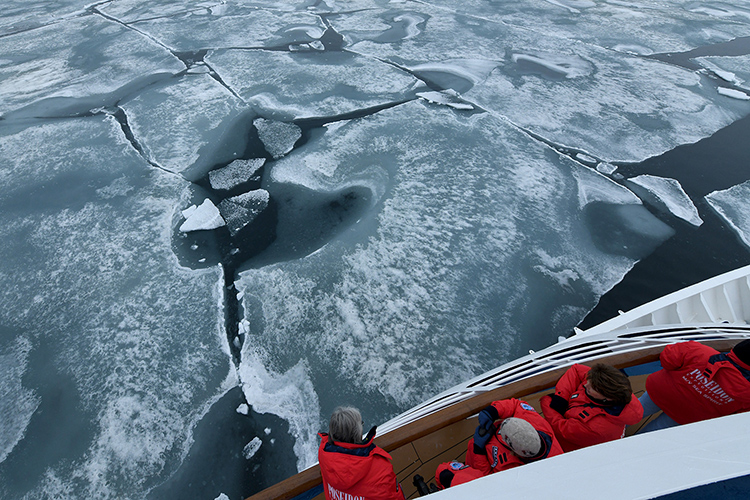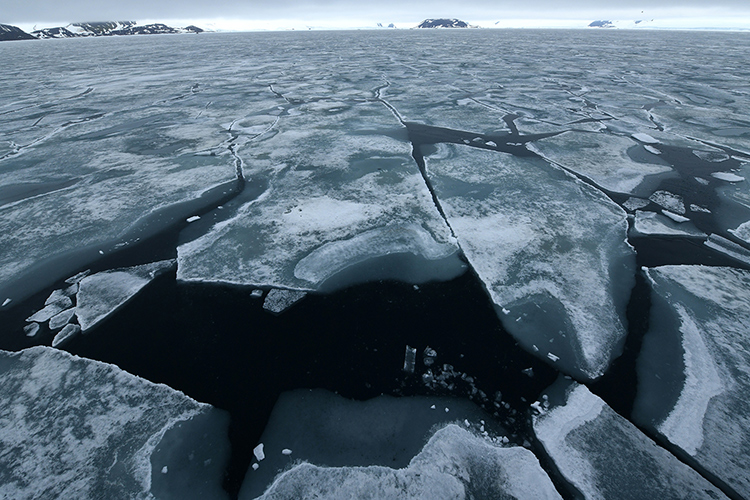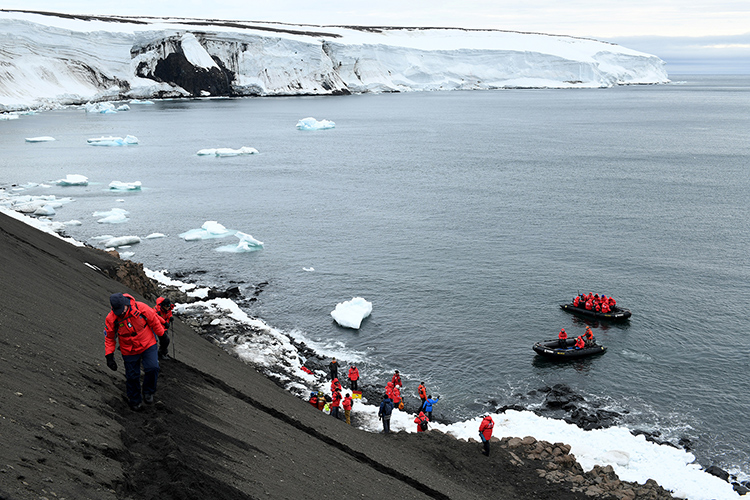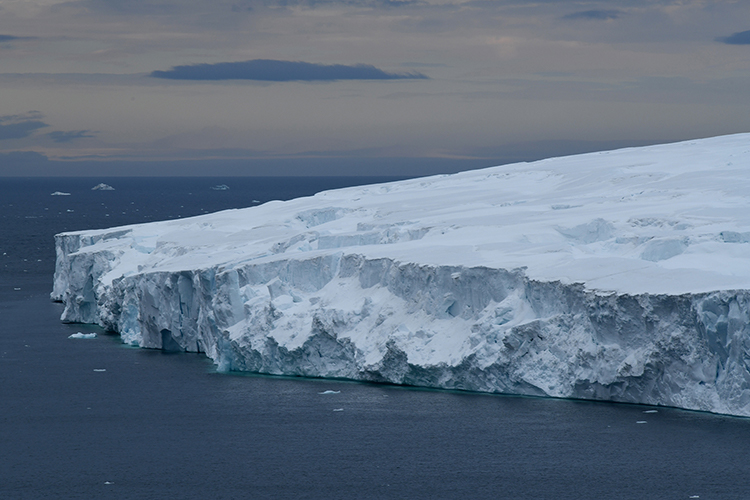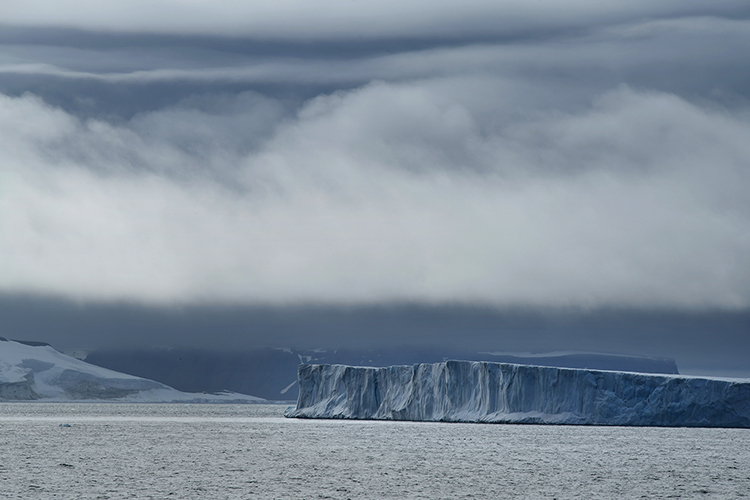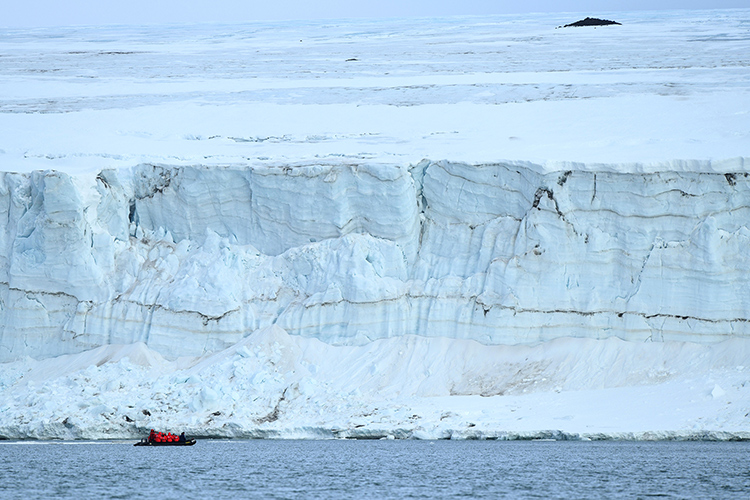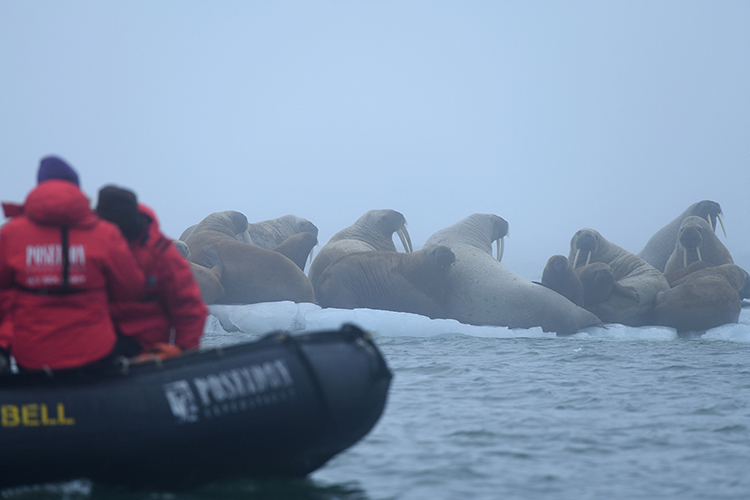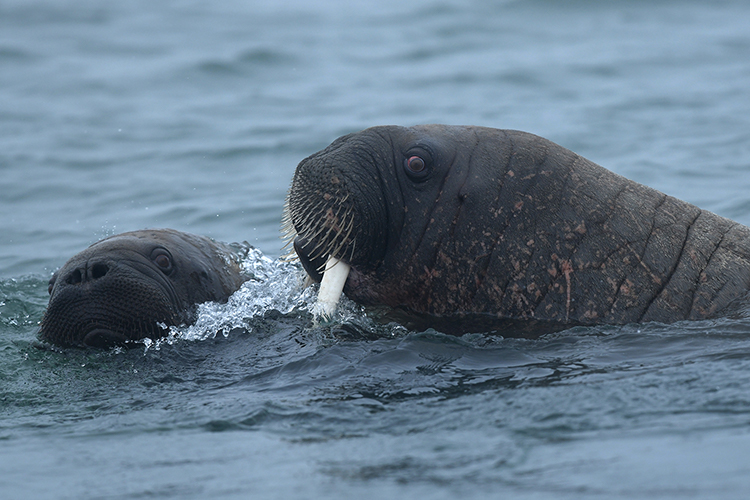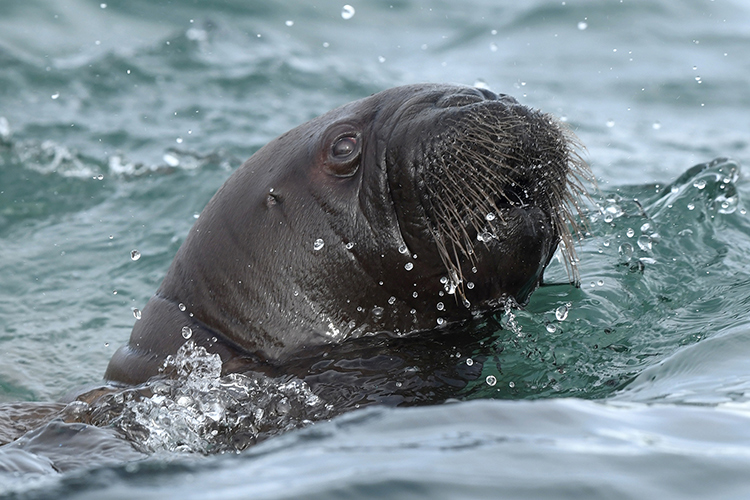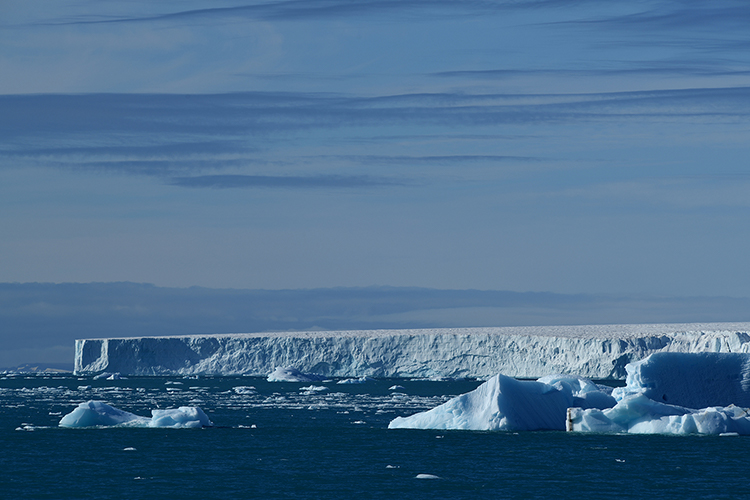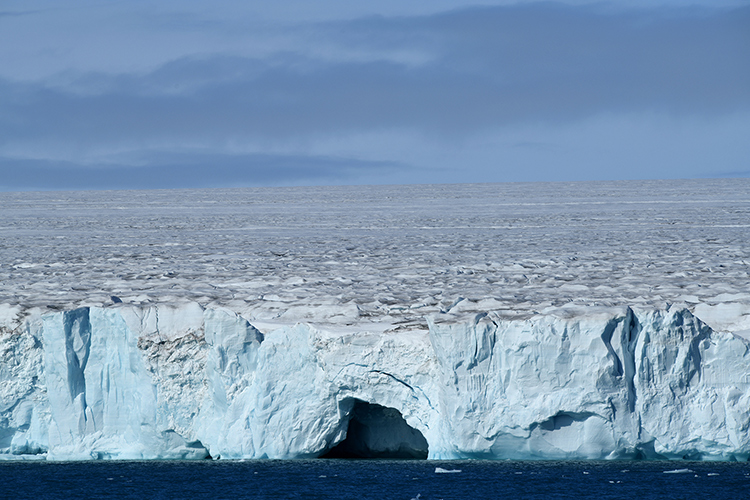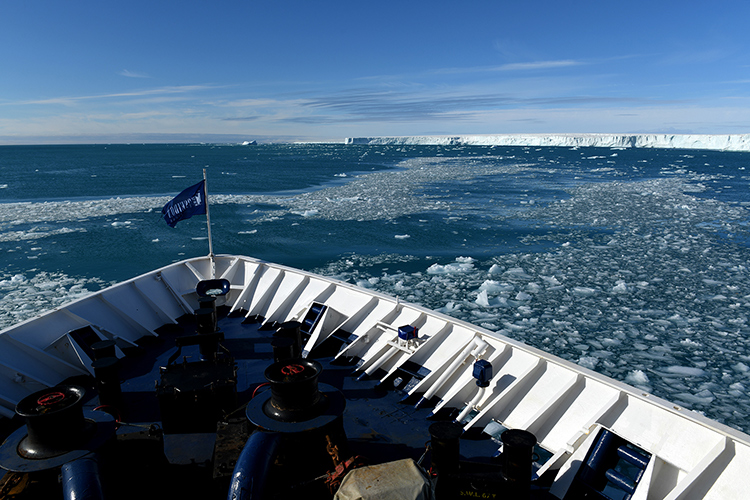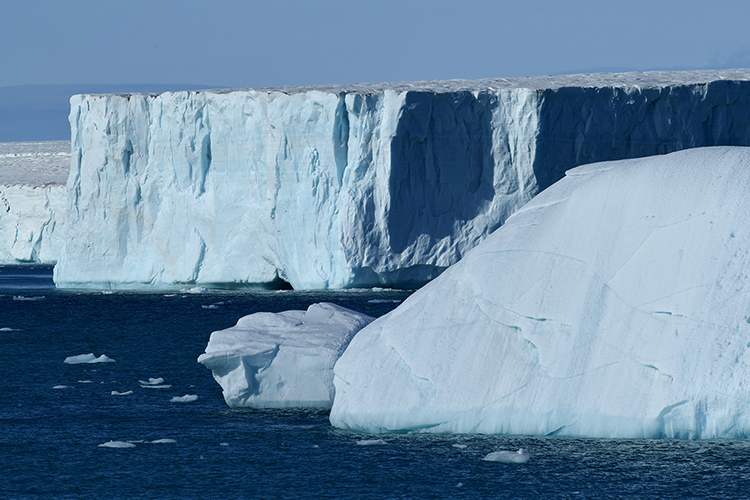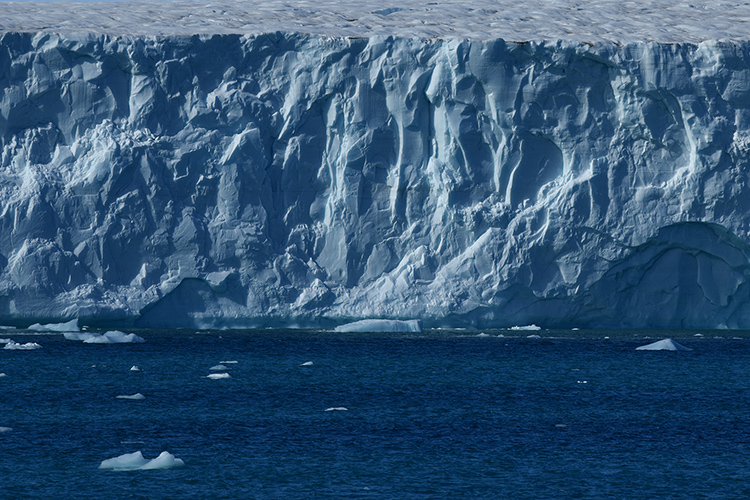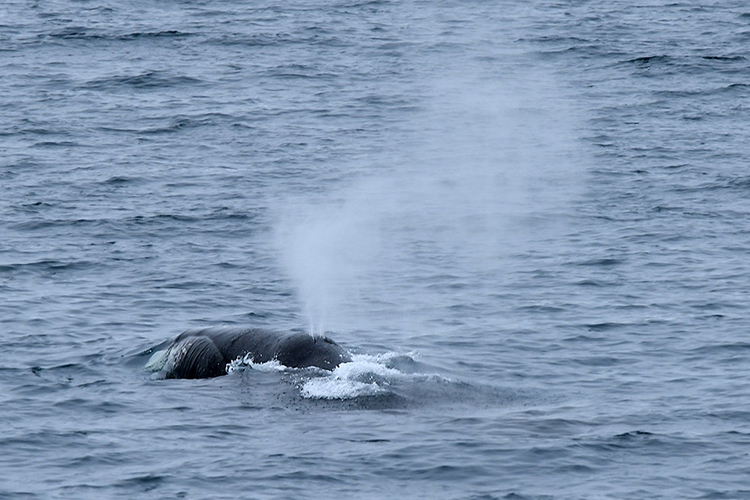Franz Josef Land Photo Gallery and Journal
Posted by Ingrid Nixon
in Polar Regions
In July 2018, Apex travelers explored the Arctic’s Franz Josef Land, a vast frozen archipelago alive with wildlife and offering some of the best Polar Bear sightings — along with Walrus and whale viewing — on Earth. Expedition team member, Ingrid Nixon, reports here on some of her favorite moments from the journey.
Our First Polar Bear Sightings!
In Franz Josef Land, wherever you find fast ice, you will find polar bears. They wander the vast icy surface in search of breathing holes for seals, usually ringed seals. Once they find a hole that strikes their fancy, they settle down and wait—often for hours—in hopes a seal will emerge from the water to take a breath. If they have selected well and if they are lucky, a seal meal will follow. To a polar bear cub, Mom is everything: provider, teacher, playmate, protector. Mom’s presence gave her cub the confidence to jump around on the ice, roll, sniff the air, and relax as we watched from the safety of our Zodiacs.
More Polar Bear Sightings at Geographer Bay
As many of you know, patience is a virtue when it comes to watching wildlife. On this day in Geographer Bay, a bear was wandering on the fast ice in the back of the bay. Morning mists made it a challenging sighting. But the bear—a female—kept ambling, sniffing the air, searching the ice for seals. She eventually came right to the ice edge where we were waiting in our Zodiacs. Magical!
A Rendezvous with Russian Icebreaker, 50 Years of Victory
While in Franz Josef Land, we rendezvoused with the nuclear-powered Russian icebreaker, 50 Years of Victory. We had been transporting two Russian researchers from Alexandra Land, where we cleared into Russia. They transferred to the icebreaker to continue on to the North Pole. Our two ships came bow to bow. Passengers of both vessels were out on deck. And one of their helicopters buzzed around the ships. Apex travelers will sail aboard 50 Years of Victory in 2019 bound for the North Pole.
Crushing Through the Ice
One afternoon we plowed through a patch of sea ice en route to our afternoon landing site. It was new ice, as it was only a few feet thick and broke easily as our bow pushed through. Looking out on a vast field of floes it was easy to imagine what it must have felt like to earlier Franz Josef Land explorers, some of who were forced to stay multiple seasons until their ship was released or crushed by the ice. Luckily, we emerged from the experience unscathed!
Polar Bears at Cape Fligely
A swimming polar bear forced us to cancel our first landing on Rudolf Island, so we headed north where—much to our delight—ice conditions allowed us to set foot on Cape Fligely, the farthest north point of the archipelago! But that landing was cut short when yet another polar bear appeared from over the hill. No doubt it was as surprised by us as we were by it. But on land, bears rule… so we made a hasty retreat.
Seeing Tabular Icebergs
One day we cruised through a field of tabular icebergs, an unexpected encounter, as they are not often seen in the Arctic. Unlike sea ice or glacier ice that calves off into the ocean, tabular icebergs form when there is so much glacier ice flowing off a landmass that it flows out into the ocean water in a sheet that is flat, like a table top. Eventually, tidal variations can cause a huge chunk of the ice sheet to break off and the resulting tabular icebergs are the result. The presence of tabular icebergs in Franz Joseph Land speaks to the magnitude of the ice in the archipelago, 85 percent of which is glaciated.
Encountering a Walrus Haul Out
We had taken to the boats expecting to do a nice ice cruise along a glacier face, but instead happened upon a Walrus haul out: females with calves and young males on ice floes and in the water. They surfaced and dove all around our boats. Awkward on ice, they moved through the water with ease and grace. Both sexes get tusks; those of a mature male growing to a length of three feet. That said, a protective mother garners one’s deepest respect when all that stands between you is a rubber tube of a Zodiac.
Brasvellbreen Ice Wall
En route back to Svalbard from Franz Josef Land, we cruised the 100+ mile long ice wall of Brasvellbreen. The ice spills off the Austfonna ice cap that covers the island to create one of the longest glacier faces in the world after Antarctica and Greenland. We were all on deck in the dazzling sun taking in the spectacle that went on and on and on and on . . . Fabulous!
Sighting Bowhead Whales
“Thar she blows!” At one time that was the call of whalers. But for our Franz Josef Land explorers, it was the call to get to the deck railings and admire one of the rarest whales on earth, the Bowhead Whale. This is the only baleen whale to spend its entire life in Arctic waters. With whaling pressures that started in the 17th century, animals in this “eastern stock” were hunted to the brink of extinction for their blubber, baleen and meat. Whaling died off in the early 1900s when plastics and petroleum products took over the market. While the population of Bowheads in the waters off Alaska is recovering, the eastern stock population has not. By some estimates there are fewer than 1,000 animals. We were lucky with multiple sightings of Bowheads throughout our explorations of the archipelago. May future generations experience the same gift.
Learn More
To see the wonders of Franz Josef Land with Apex Expeditions, join us on our upcoming North Pole expedition which spends three days exploring the Franz Josef Land archipelago.

